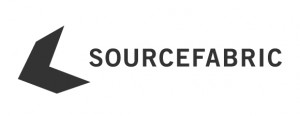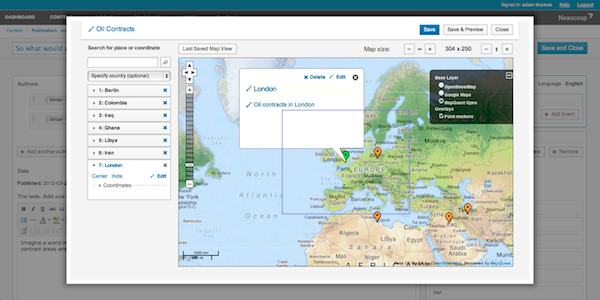Developing open source software for newsrooms
 News organisations worldwide are more often than not trying to answer these questions: which content management system is best for us? Should we develop a technical solution ourselves or should we use open software? Will this open system be flexible and innovative enough?
News organisations worldwide are more often than not trying to answer these questions: which content management system is best for us? Should we develop a technical solution ourselves or should we use open software? Will this open system be flexible and innovative enough?
Sourcefabric says it has answers to those questions. This non-profit organisation is headquartered in Prague and develops open source software for newsrooms. The idea behind it is simple. Although a newsroom in Berlin can be totally different from one in Baghdad or Bangkok, all newsrooms function in a similar way regardless of their location. Any newsroom needs to gather, filter, publish and archive information.
Media organisations from Ghana to Switzerland and from Brazil to Belarus are using Sourcefabric’s opensource software such as Newscoop and Airtime. A network of developers worldwide are continuously refining their products. DW Akademie’s Steffen Leidel spoke to Sourcefabric’s Adam Thomas about their software and why their tools and systems are proving successful in media organisations, particularly in developing countries.
There’re many different content management systems (CMS) out there. Why should a media organisation use Sourcefabric and not WordPress or Tumblr?
Well those are all great tools and we’ve learned a lot from them. Newscoop specifically is made by journalists and for journalists, so we work in a real true core development mode, where we’re bringing together programmers and journalists to build the tool that they want to use. So Newscoop has a lot of things that are very specific for journalism, it has a very powerful media archive which deals with video, audio, images and maps very well. It can handle maps and build up data sets around a location. Obviously, it allows you to do things like subscribers and paywalls, which is very important too for media organisations. The workflows set up within it are designed for journalists to a certain extent. We understand that there’re different types of journalists and there’re different permissions, some are chief editors, some are editors and some are just journalists. We’ve really worked with journalists to try and hone a platform with Newscoop that can be used in a lot of different news scenarios.
What are the risks of using your CMS? What happens if Newscoop suddenly gets discontinued just as Posterous did ?
Newscoop itself has been around since 1998, so it has a long history. Even if we stopped making Newscoop tomorrow, there’re hundreds of news organisations who are using Newscoop and who are contributing to its development. So even if that happened, you’d still be part of a large community that could work on these things on their own if they want and still carry on developing it. What’s important is that you can install it on your own server if you have a technical team. You then control your own data – and this is different from Posterous or other services that are web-based and where you are giving your data to a third party. These services actually own your data to a large extent and they can sell your data too. This is not the case with Sourcefabric. We can host it for you if you don’t have the technical capacity to do this, we have very open and transparent ways to do this. We allow you to have control over your data and we don’t own it at any point.
There’re hundreds of organisations using your software, so does that make it complicated for a news organisation to get proper service for your software?
Because the code is open-source, there’s nothing to stop you from modifying the code yourself and making your own features. But the nature of the open-source license is that these changes should go back into the original code and therefore benefit other people. If you have your own development team, that’s fantastic. But if you really don’t have a potential for that, you can join our worldwide community and benefit from having the expertise and feedback from hundreds of people.
My central hypothesis is that newsrooms all over the world are unique, but there’re certain things that make them identical. If we understand what these things are, we can help our users work together to build better tools. Essentially, the way that newsrooms are the same is the way that they work. They all have to do with planning assignments, they all have to do information gathering and verification, they are all publishing it somewhere and the are all archiving. If you understand that process, it allows you to build better tools that help news organisations.
What too many news organisations do, is that they focus on the output first and foremost. They say: “We need a website”, “We want an iPad journal”, “We need an iPhone app”, “We want to make a radio station”. Fundamentally, that’s not important. What you have to do is look at the way that your newsroom works, who your sources are, what kind of information are they giving you and how you can verify that information. Then you look at publishing it and where that needs to go best. So if you are starting with an idea of doing a website, that doesn’t work. But if you start with thinking about what makes you unique from other kinds of news organisations, then you isolate the really important things that allow people like Sourcefabric and other organisations to develop really great tools for you.
Aren’t you afraid that in the future news organisations will just look all the same, using the same tools and the same apps?
Absolutely no. We try to divorce content to a certain extent from how it is outputted. The content that is being passed around the newsroom is just a story. It can have video, audio or pictures, but, essentially, it’s a story. Once you understand this, it becomes very easy to change what this looks like on any given web platform. No two websites look the same. Design can be completely different. But processes and workflows are the same. By making it easier and more streamline, you can spend more time working on the design, doing market research and finding out who your audience are, evaluating what’s working.
Many people say: “collaboration is the future, no media organisation can manage the change on its own”. It looks like you are working in this direction as well.
I really hope so. I think we’re pioneering a way of working that really focuses on building communities around news, but also around technology. Traditionally, news organisations competed with each other for the attention of the audience. Now, news organisation are not competing with each other but with the internet. They’re competing with Twitter and Facebook. Therefore it’s very important that they start working together. This can be building tools, cooperating with newsrooms that have certain specialities to cover stories better, it can also be working together to spread news. If you are a local news organisation, you don’t need to have a person in Washington and a person in Moscow, but you can rather partner with other local organisations there and share content. It benefits both of you, you’re not in direct competition, but you actually get more content and more value for your readers. It means people are more likely to come back to your site because you provide real quality for your audience. That involves collaborating on technology, but also the gathering and production of news as well.
What’s the next step for Sourcefabric?
We’re working very hard on a tool called Superdesk which is taking 10-15 years of experience we have at working in newsrooms. We are trying to build a newsroom content management tool. It’s not just about publishing to the web in a traditional CMS sense, but rather managing the workflow of newsrooms, the people and stories inside it and the information that is being gathered. It’s built in such a way that you can build apps on top of the framework. It’s more of a platform that allows you to shape your own business strategy. We’re working on building our own apps for this. We have a live blog app that is allowing news organisations to blog live events very quickly adding social media and things like this. We’re actively looking to work with other news partners to develop new apps, this could be in the field of radio or in the field of data, there’re a lot of possibilities. The core thing is that we have a platform that is very adaptable, it’s very open and we have lots of people working on it. Right now, we’re working on a beta prototype of that.






Feedback